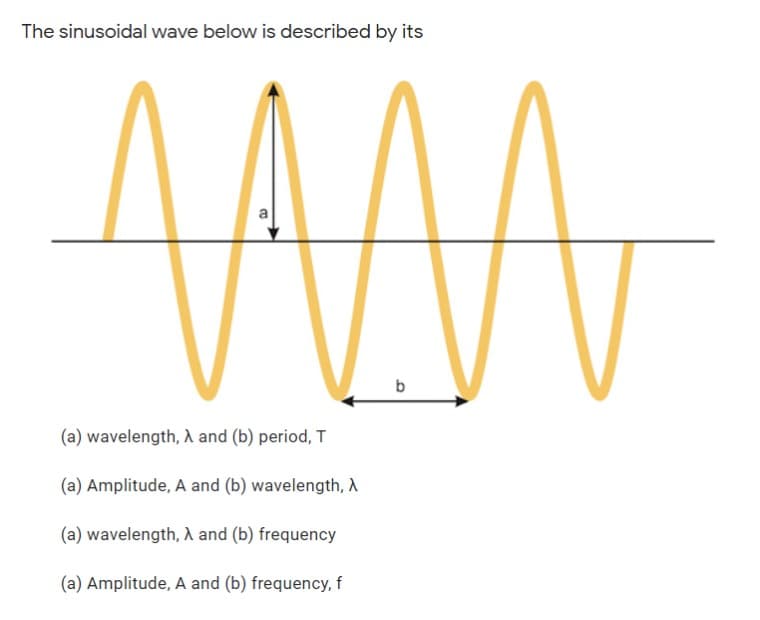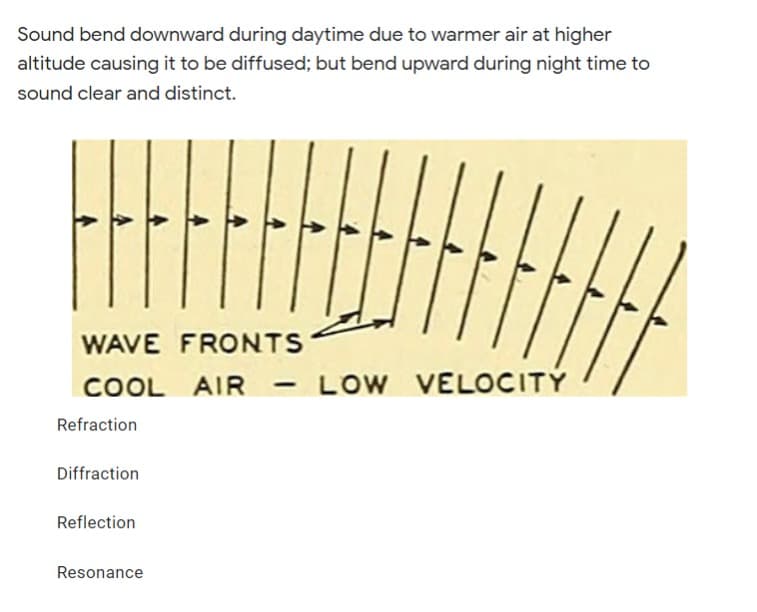1) The sinusoidal wave below is described by its 2) Sound bend downward during daytime due to warmer air at higher altitude causing it to be diffused; but bend upward during night time to sound clear and distinct. 3) Are mechanical vibrations far greater and frequent than what is audible to human; maybe used for medical imaging of internal organs a. hypersonics b. supersonics c. ultrasonics d. infrasonics
Properties of sound
A sound wave is a mechanical wave (or mechanical vibration) that transit through media such as gas (air), liquid (water), and solid (wood).
Quality Of Sound
A sound or a sound wave is defined as the energy produced due to the vibrations of particles in a medium. When any medium produces a disturbance or vibrations, it causes a movement in the air particles which produces sound waves. Molecules in the air vibrate about a certain average position and create compressions and rarefactions. This is called pitch which is defined as the frequency of sound. The frequency is defined as the number of oscillations in pressure per second.
Categories of Sound Wave
People perceive sound in different ways, like a medico student takes sound as vibration produced by objects reaching the human eardrum. A physicist perceives sound as vibration produced by an object, which produces disturbances in nearby air molecules that travel further. Both of them describe it as vibration generated by an object, the difference is one talks about how it is received and other deals with how it travels and propagates across various mediums.
1) The sinusoidal wave below is described by its
2) Sound bend downward during daytime due to warmer air at higher altitude causing it to be diffused; but bend upward during night time to sound clear and distinct.
3) Are mechanical vibrations far greater and frequent than what is audible to human; maybe used for medical imaging of internal organs


Trending now
This is a popular solution!
Step by step
Solved in 3 steps with 3 images








